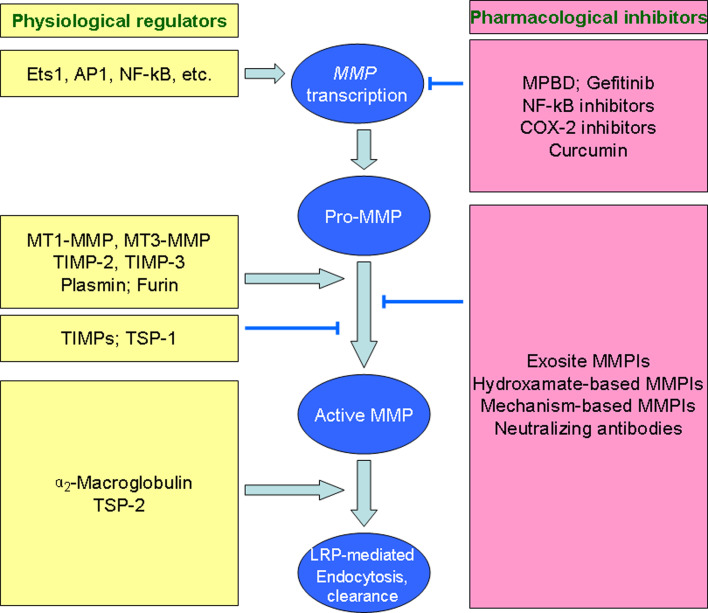Fig. 2.
Physiological and pharmacological regulation of MMP. The inactive pro-MMPs are synthesized from MMPs transcripts. The transcription of MMPs is regulated by transcription factors including Ets1, AP1, and NF-κB. The mechanisms underlying the activation of pro-MMPs are complex. Both MT1-MMP and MT3-MMP are involved in the activation of pro-MMPs. In addition, MMPs may be activated by plasmin and furin-like mechanism. Tissue inhibitors of metalloproteinase (TIMP) are endogenous MMP inhibitors that prevent the activation of pro-MMPs. TSP1 also inhibits the activation of MMPs. Paradoxically, TIMP-2 and TIMP-3 are involved in the activation of pro-MMP as well. The turnover of active MMPs may involve LRP-mediated endocytosis and clearance. α2-Macroglobulin and TSP-2 act as endogenous MMP inhibitors through promoting LRP-mediated endocytosis and clearance of active MMPs. The pharmacological inhibitors of MMPs transcription include 5-methyl-2-(4-methylphenyl)-1H-benzimidazole (MPBD), Gefitinib, NF-κB inhibitors, COX-2 inhibitors, and curcumin. In addition to hydroxamate-based MMP inhibitors (MMPIs), there are exosite MMPIs and mechanism-based MMPIs. Moreover, neutralizing antibodies to individual MMP are emerging as another choice for selective inhibition of MMP

